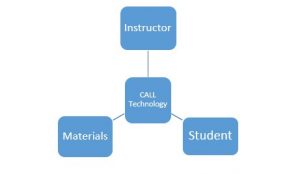I recently read an article entitled Computer Assisted Language Learning (CALL) and ESL Writing Process: The 21st Century Must (Arab, 2015). The article was written by Lara Al Arab and it focuses on the concept of ‘digital natives’ within the contemporary world of education. A digital native refers to those individuals which have developed in an environment defined by digital technology (Arab, 2015). The author argues that these digital natives must be provided with a learning environment which properly integrates those aspects of technology which augment the language learning process.
CALL is a highly effective means of presenting core concepts relating to primary and secondary language instruction. This is especially true in the completion of tasks relating to collaborative writing. The author recommends programs like Google Docs (http://docs.google.com/) as a means of fostering effective collaboration between technology minded students (Arab, 2015). Wikis are also offered as an example of CALL which benefits collaborative learning environments (Arab, 2015).
Though digital technology offers an excellent means of enhancing linguistics education, it is important to remember that the instructor cannot rely too heavily upon digital technology. A balance must be struck as illustrated by the image below:

The CALL technology employed in the classroom acts as the intermediary between the instructor, student, and materials. CALL is the glue which binds the language course together in the context of contemporary technology based education. It is both a tool and a framework for advancing the way that students interact not only with each other but with the core concepts of linguistics.
References
Arab, L. A. (2015). Computer Assisted Language Learning (CALL) and ESL Writing Process: The 21st Century Must. Retrieved from https://www.linkedin.com/pulse/computer-assisted-language-learning-call-esl-writing-process-al-arab
Google. (2016). Google Docs. Retrieved from http://docs.google.com/

Leave a Reply
You must be logged in to post a comment.